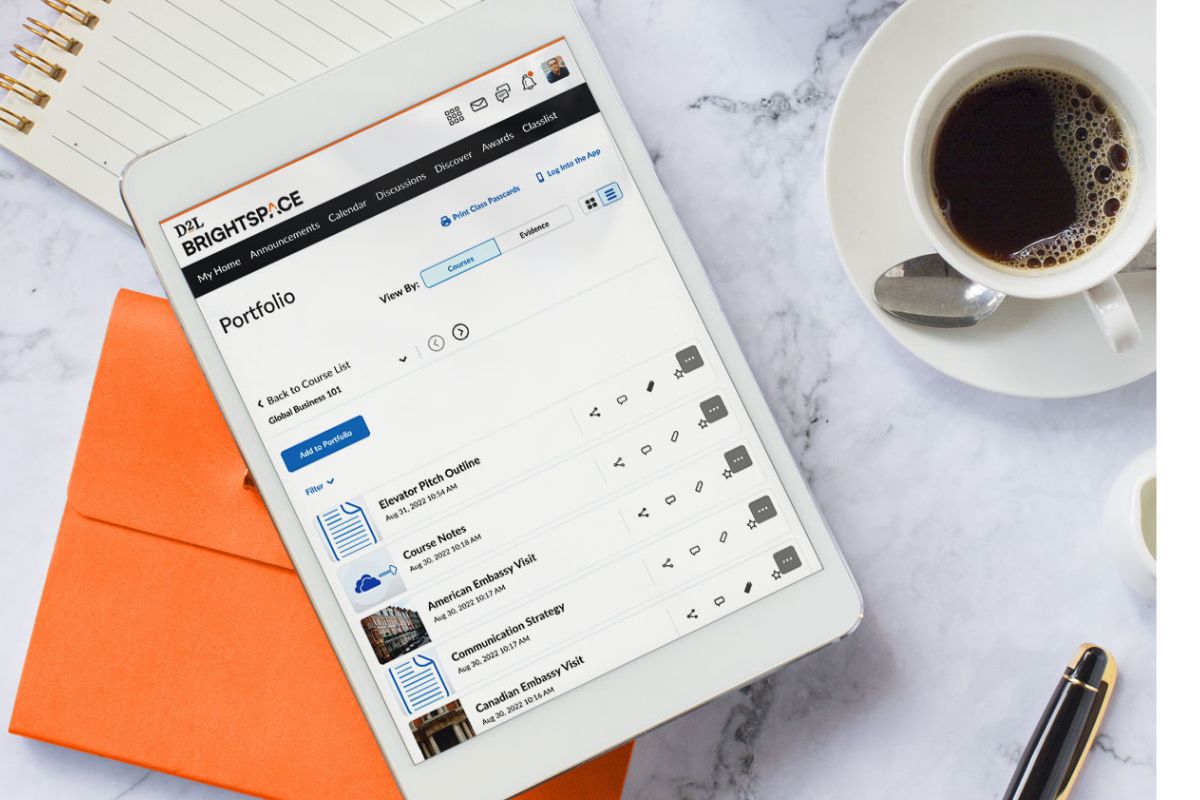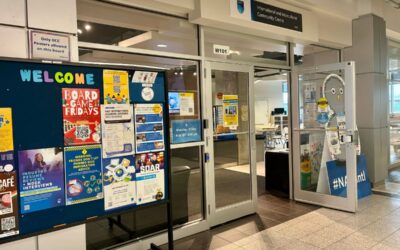This article was originally published in the Oct. 9 print issue.
When students started classes in Fall 2024, they were met with a new learning management system (LMS): Brightspace. This was no surprise to some students, but for many, it was an unexpected change. Many students were left wondering why the institution felt the need to shift away from Moodle and what this new platform had to offer.
Where it started
As Mark Schneider, Director of LMS Transition, told the Nugget, “As a polytechnic and an institution, we need to readily innovate.” A good practice in the LMS world is to review the system every five to seven years, Schneider explained. Moodle had not undergone a review in “probably 12 years.” NAIT started reviewing their LMS before the COVID-19 pandemic, but the review took a backseat as the institution focused on bigger priorities, like shifting learning models during lockdown. Post-COVID, the review continued, and NAIT hired an independent firm to do a needs analysis. As Schneider explained, the intent was not to move away from Moodle, but just to conduct a review of the LMS system. After surveying students, instructors and staff, NAIT identified the requirements their LMS should have, and essentially held an open call to see which platform would suit the institution’s needs.
“We took the feedback from our users and formulated some criteria for going into a formal evaluation, and invited every LMS major player to come to the table and see which one can best address the needs of our staff and students that were identified,” said Schneider. “Ultimately, Brightspace won the competition.”
Why Brightspace
Schneider explained that one of the primary things identified by the needs analysis was a mobile-friendly experience. “We had staff that pretty well couldn’t do anything on mobile devices with regards to Moodle,” said Schneider. “They were still having to grade things on desktops, they were still having to walk from the classroom to their office to do things. So mobile connectivity for both students and staff was absolutely paramount.”
In terms of mobile functionality, the Brightspace Pulse app is rated highly by users, with a 4.4 on the Google Play Store and 4.8 on the App Store. Another feature of Brightspace highlighted by Schneider is the user accessibility and accommodation it allows. “Our new LMS is really a student-first platform. It’s one that’s designed to allow for simple things like checking of content to see if it’s accessible to students with visual impairments,” he explained.
Among his favourite features, Schneider placed the user support of Brightspace at the top. Moodle didn’t offer built-in support, but through Brightspace, students can access help at any time, any day of the year. “In our previous LMS it was always confusing. Where does the student go for support? When the student’s trying to access an assignment on Saturday at 11:00 at night, and it’s due on Sunday morning, who do they reach out to?”
“Not to say that’s the best practice, but that’s what was happening in Moodle. Now we have 24 hours, seven days a week, 365 days support,” explained Schneider.
Differences in capabilities
Moodle was an open-source LMS, which meant it took a lot of work for instructors to set up their course pages. This led to inconsistencies as instructors with varying degrees of tech expertise designed their courses. But with Brightspace, a third-party software, Schneider said it’s a lot easier for instructors to set up their courses.
“Instructors had to go through an incredible amount of effort to get their sites to a point where they had an engaging appearance as well as remained informative to students … there were inconsistencies in a lot of course sites. There were course sites where section A01 of a course and 02 of a course, even though it’s the same course, these LMS sites looked very different.”
Brightspace also has a number of features that Moodle did not, like the ability to host quizzes and assignments on the platform. This leads to a natural question: Will more and more quizzes and exams be integrated into the LMS itself instead of relying on publisher sites? Schneider revealed that while it is “super easy” to build quizzes in Brightspace, instructors are free to use whatever resources they think are the best to deliver their course and that the decision is their own.
“Tuitions are high, wages are low, living costs are high. It’s the nature of where we live. This is where opportunity can be sought to help reduce student cost,” said Schneider. “I think that responsibility is something that is in the domain of instructors and needs to be strongly considered. And quite frankly, needs to be encouraged, not strongly considered.”
Schneider is hopeful that moving forward the dependence on publisher resources will reduce, with the faculty eventually moving things to Brightspace. “I think the hope is that it will take time for us to get there, by providing a medium where things are inherently easier to develop for the student, in a built-in LMS solution. I think faculty will get there, but it’s going to take time.”
Yet, it is unlikely that publisher products will ever be completely eliminated. “There are certain scenarios where a publisher product is best,” explained Schneider. Still, starting is the hardest step in any process.
Cover photo via D2L






